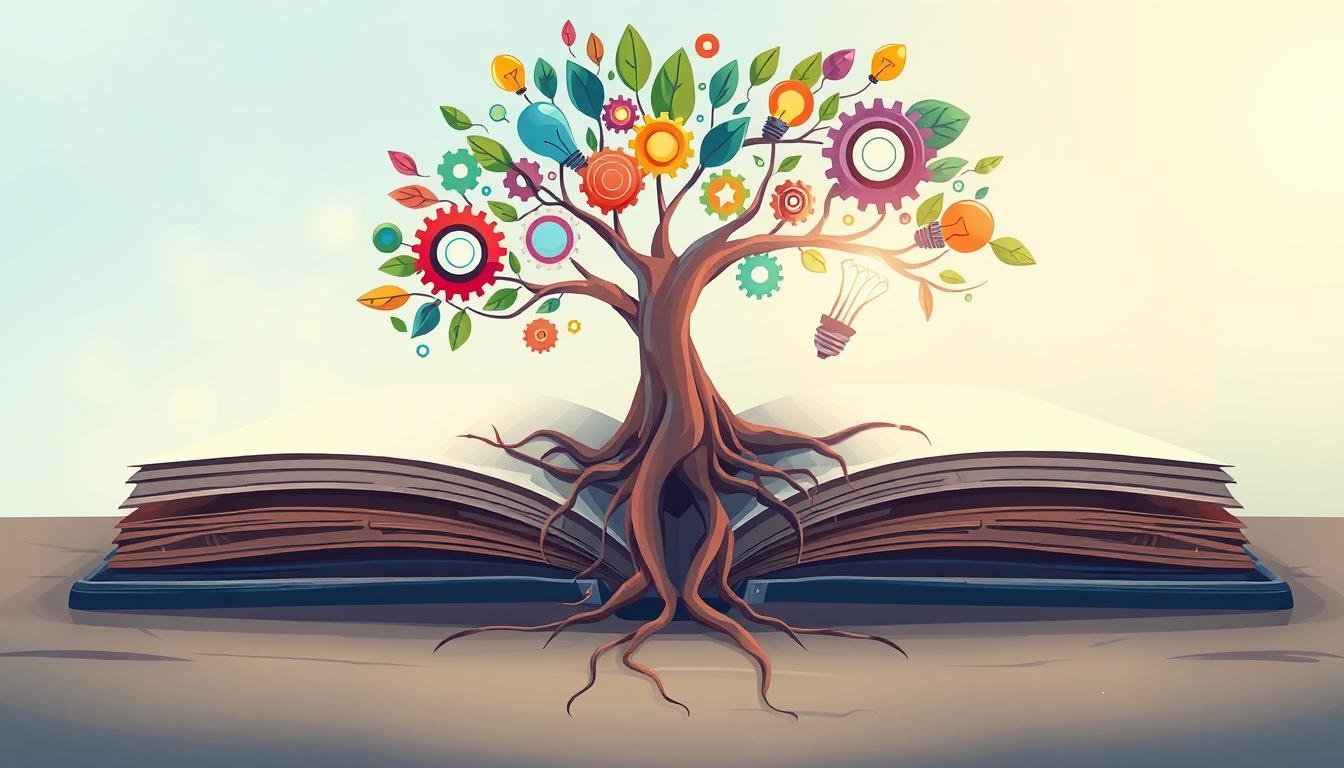Promoting a Growth Mindset
“The passion for stretching yourself and sticking to it, even (or especially) when it’s not going well, is the hallmark of the growth mindset. This is the mindset that allows people to thrive during some of the most challenging times in their lives.” – Carol Dweck
Promoting a Growth Mindset is more than just a catchy phrase; it’s a powerful approach to learning and personal development. This concept, pioneered by Stanford psychologist Carol Dweck, suggests that our abilities aren’t set in stone but can be developed through effort, strategies, and support.
In today’s fast-paced world, the ability to adapt and grow is crucial. A growth mindset fosters resilience, encourages perseverance, and opens doors to new learning strategies. It’s about seeing challenges as opportunities and failures as stepping stones to success.
Educators play a vital role in nurturing this mindset. By shifting their language, praising effort over innate ability, and expressing belief in students’ capacity to learn, teachers can create an environment where growth thrives. This approach not only boosts academic performance but also prepares students for life’s challenges beyond the classroom.
Key Takeaways
- A growth mindset believes abilities can be developed through effort and learning
- Embracing challenges and persisting through setbacks are key growth mindset traits
- Teachers significantly impact student mindset through their actions and words
- Praising process and effort over innate ability promotes a growth mindset
- Offering diverse learning activities and choices fosters positive engagement
- Self-evaluation helps students reflect on successes and learn from failures
- Modeling a growth mindset is crucial for educators to inspire students
Understanding Growth vs. Fixed Mindset Fundamentals
Mindset Theory is key in how we learn and grow. Let’s look at the two main mindsets and how they affect personal growth.
Defining the Two Mindset Types
The Growth Mindset and Fixed Mindset are two ways to see abilities and intelligence. Those with a Growth Mindset think they can improve their skills with effort. On the other hand, a Fixed Mindset sees abilities as fixed traits.
The Science Behind Mindset Theory
Carol Dweck, a famous psychologist, introduced Mindset Theory in 2006. Her study found that Growth Mindset people’s brains react to mistakes. Fixed Mindset people’s brains don’t. This shows the brain’s role in learning.
Impact on Learning Achievement
Mindset greatly affects how well we learn. Studies show Growth Mindset people:
- Keep trying hard tasks
- Look for ways to get better
- Work well with others
- Take on new challenges
But, a Fixed Mindset can make us afraid to fail and hold us back. Growing a Growth Mindset boosts resilience, motivation, and success in life.
“Success is about effort and persistence, in addition to innate talent.” – Growth Mindset principle
The Psychology of Mindset Development
Understanding the psychology behind mindset development is key for growth and learning. This section looks at how brain plasticity, self-perception, and overcoming barriers help in continuous improvement in schools.
Brain Plasticity and Learning Potential
Brain plasticity means the brain can make new connections at any age. This supports the idea that intelligence can grow. Students who know about brain plasticity are more likely to face challenges and keep learning.
Role of Self-Perception in Learning
Self-perception is crucial for learning success. Students with a growth mindset see their abilities as changeable. This leads to more motivation and better grades. A study by Carol Dweck found that praising effort boosts students to take on harder tasks.
Overcoming Learning Barriers
It’s important to tackle learning barriers for ongoing growth. Teaching students to see mistakes as chances for growth builds resilience. Using flexible grading, like allowing revisions for extra credit, can also help students do better.
| Growth Mindset Approach | Impact on Learning |
|---|---|
| Praising effort and persistence | Enhances academic resilience |
| Encouraging reflection | Improves self-awareness and learning strategies |
| Viewing difficulties as opportunities | Increases engagement and problem-solving skills |
By focusing on these psychological aspects, teachers can create spaces that support growth mindsets. This empowers students to face and overcome learning barriers, leading to ongoing improvement in their studies.
Promoting a Growth Mindset in Educational Settings
Schools are key in shaping students’ mindsets. They offer chances to grow and prepare for the future. Teachers play a big role in creating supportive learning environments.
Teacher’s Role in Mindset Development
Teachers are crucial in developing growth mindsets. They set the learning tone and guide students’ views of their abilities. Good teachers focus on effort, not just talent, helping students see challenges as growth opportunities.
Classroom Implementation Strategies
Using growth mindset strategies in classrooms can greatly help students succeed. Teachers can use many ways to promote this mindset:
- Encourage students to embrace challenges
- Teach the power of “yet” in learning
- Celebrate effort and progress, not just results
- Use failure as a learning opportunity
Creating a Supportive Learning Environment
A supportive learning environment is key for growth mindsets. Teachers can make this by:
| Strategy | Impact |
|---|---|
| Praising effort | Encourages perseverance |
| Setting achievable goals | Builds confidence |
| Promoting collaboration | Enhances peer learning |
By using these strategies, teachers can build a classroom culture that values growth and effort. This not only improves grades but also prepares students for life-long learning and success.
Effective Language and Communication Techniques
Language shapes our thoughts and beliefs. Using growth-oriented language helps students think positively. Teachers are key in teaching communication skills that boost learning and growth.
It’s important to praise effort more than intelligence. Say “Your hard work paid off” instead of “You’re so smart.” This change helps students focus on the journey, not just the end.
“That feeling of algebra being hard is your brain developing.”
Phrases like this turn challenges into chances. They show that struggling is okay and helps us grow. This mindset builds resilience and keeps students eager to learn.
| Fixed Mindset Language | Growth Mindset Language |
|---|---|
| “I’m not good at math.” | “I’m working on improving my math skills.” |
| “This is too hard.” | “This may take some time and effort.” |
| “I made a mistake.” | “Mistakes help me learn and grow.” |
Good communication involves asking questions that make students think. “What did you learn from this experience?” helps them see value in both wins and losses. This builds a growth mindset and encourages lifelong learning.
Building Resilience Through Challenge and Feedback
Resilience is vital for success in life. It comes from facing challenges and learning from feedback. This mindset helps us grow and adapt to change.
Embracing Challenges as Opportunities
Seeing challenges as growth chances is key. People with a growth mindset see obstacles as ways to improve. This keeps them motivated and focused.
Constructive Feedback Approaches
Constructive feedback is great for growth. It shows us where to get better and how to improve. Good feedback focuses on the journey, not just the end result.
Celebrating Progress and Effort
It’s important to celebrate our efforts and small wins. This keeps us motivated to keep trying and improving.
| Mindset Characteristic | Impact on Resilience |
|---|---|
| Embracing Challenges | Increases willingness to confront difficulties |
| Learning from Feedback | Promotes continuous improvement |
| Celebrating Effort | Boosts motivation and perseverance |
By adopting these mindset traits, we can become more resilient. This not only helps us grow but also improves our overall well-being and success.
Tools and Resources for Mindset Development
Educators are key in helping students grow their mindsets. This section looks at tools to support this goal.
Assessment Methods
Good assessment methods help track growth in mindsets. Self-evaluation helps students think about their learning. Flexible grading lets them improve, seeing challenges as growth chances.
Teaching Materials and Activities
Many teaching materials help with mindset growth. Handouts explain growth mindset basics. Videos and audio make learning fun.
Group projects teach teamwork and problem-solving. They show the importance of effort and not giving up.
Professional Development Resources
Teachers need support to use growth mindset strategies. Professional development programs offer training and resources. Good Grief Schools provides online tools for educators to build resilience and promote growth mindsets.
“The growth mindset framework emphasizes that learning and abilities are not fixed, leading individuals to believe they can improve their knowledge through effort.” – Carol Dweck
Using these tools, educators can foster a love for learning. They create an environment that promotes growth and resilience in students.
Conclusion
Fostering a growth mindset is crucial for unlocking student potential. Dr. Carol Dweck’s research shows that students with this mindset face challenges head-on. They achieve greater success because they focus on effort and strategy, not just ability.
Effective strategies are key to promoting growth mindset benefits. Using the “What Went Well and Even Better If” marking system helps students reflect. Live feedback and celebrating small wins create a supportive environment for growth.
The journey to develop a growth mindset is dedicated but rewarding. Students with this mindset see hard work as essential to learning. This leads to better academic performance and a love for knowledge.
By focusing on the learning journey, educators help students value effort and strategies. This mindset is powerful, extending beyond the classroom. It equips young learners with life skills for lifelong success and continuous improvement.
Source Links
- Enhancing Growth Mindset
- 5 Ways to Promote a Growth Mindset in Your Classroom – Keep ‘em Thinking
- How to Help Students Develop a Growth Mindset
- Understanding Growth Mindset vs Fixed Mindset – Mentorloop
- Growth Mindset vs. Fixed Mindset: What’s the Difference?
- How to Foster a Growth Mindset in the Classroom | American University
- Growth Mindset and Enhanced Learning
- The Psychology of Achievement: Developing a Growth Mindset
- Promoting a Growth Mindset, A PD Activity to Try -Mike Anderson
- 7 Benefits of Promoting a Growth Mindset in Students – For The Love of Teachers
- The Power of Communication and the “Growth Mindset”
- Mastering the Language of Growth Mindset: 10 Powerful Sentences – Osita IBEKWE
- Empower Students with a Growth Mindset: 10 Essential Phrases
- Embracing Growth: The Power of a Growth Mindset in Building Resilience – Enhanced Wellness Living
- Developing a Challenge Mindset – A Key to Resilience – BelievePerform – The UK’s leading Sports Psychology Website
- Resources for Teaching Growth Mindset
- Top Growth Mindset Resources for Parents and Educators
- Developing a Growth Mindset: Tools and Tricks to Help Students Learn How to Learn
- The Growth Mindset in Education – School Planner Company
- The Importance of a Growth Mindset








